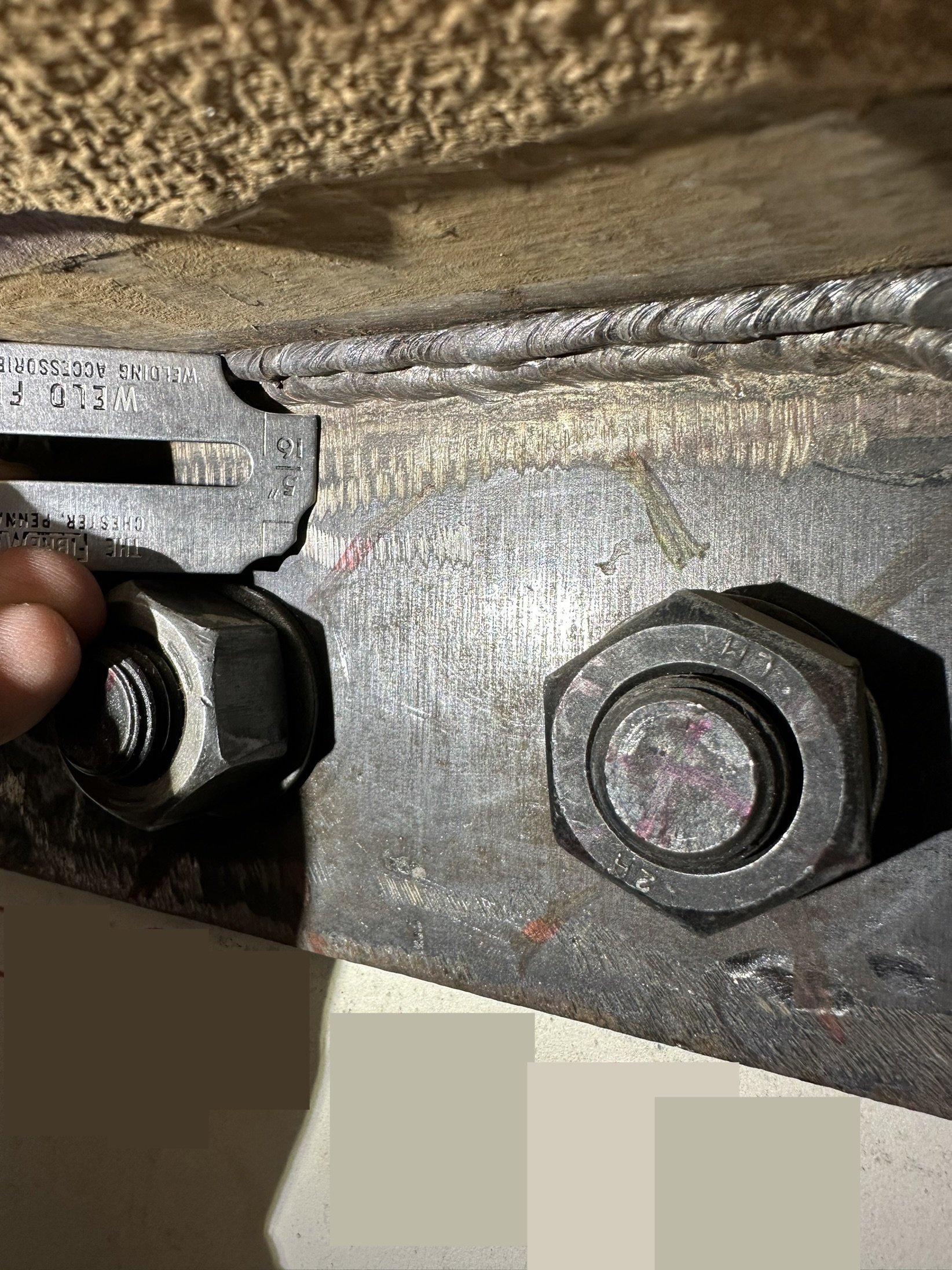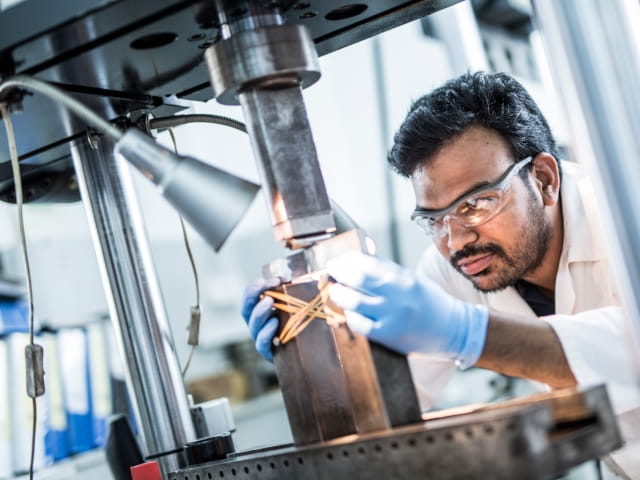Remain Ahead with Proactive Welding Inspection Service Solutions
Remain Ahead with Proactive Welding Inspection Service Solutions
Blog Article
The Necessary Sorts Of Welding Services Every Market Ought To Know Concerning
From the standard yet trustworthy arc welding to the precision of laser beam welding, each method uses distinct advantages and applications that drive the performance and high quality of manufacturing. As markets develop and require for cutting-edge options grows, being skilled in these welding techniques is not simply helpful yet essential for staying competitive and conference industry standards.
Arc Welding
Arc welding is a commonly utilized welding process that uses an electric arc to sign up with steel elements together. This technique prevails in various markets due to its flexibility and performance in creating solid and resilient welds. The procedure includes creating an electrical arc between the base metal and a palatable electrode, normally made of a comparable product. As the arc warms the workpieces, they melt and fuse together, creating a strong joint upon cooling.
Among the key benefits of arc welding is its capacity to weld a wide variety of steels and alloys, making it appropriate for varied applications. Furthermore, arc welding can be performed utilizing various variants, such as secured metal arc welding (SMAW), gas metal arc welding (GMAW), and flux-cored arc welding (FCAW), each offering specific benefits depending on the project requirements.
Additionally, arc welding is recognized for its simplicity and cost-effectiveness, making it a preferred choice for many makers and manufacturers. By grasping the numerous techniques and devices related to arc welding, specialists can generate top notch welds successfully and accurately.
Gas Metal Arc Welding (GMAW)

Among the essential advantages of GMAW is its ability to produce tidy welds with very little splatter, making it suitable for applications that require a high degree of accuracy. Additionally, GMAW is relatively very easy to learn and can be automated for boosted performance in industrial settings. With appropriate strategy and devices arrangement, GMAW can produce solid, top quality welds that fulfill sector requirements. Generally, GMAW is a flexible welding procedure that offers efficiency, adaptability, and reliability for a variety of welding applications across various sectors.
Gas Tungsten Arc Welding (GTAW)
Gas Steel Arc Welding (GMAW) offers extraordinary welding efficiency, and in a similar way, Gas Tungsten Arc Welding (GTAW) brings a different collection of benefits to the table in the world of welding solutions (Welding Inspection Service). GTAW, also called Tungsten Inert Gas (TIG) welding, is a functional and premium welding process commonly used in markets such as aerospace, auto, and manufacturing

One of the essential advantages of GTAW is its capacity to produce top quality, precise welds on a range of metals, consisting of light weight aluminum, stainless steel, and copper alloys. This process enables greater control over the welding arc, resulting in tidy, spatter-free welds with very little post-weld cleaning required.
GTAW is additionally preferred for its ability to bond thin products without creating warping or distortion, making it suitable you can try here for applications where appearances and precision are crucial. Additionally, the TIG welding process can be made use of with or without filler metal, giving adaptability in welding various joint types and thicknesses.

Resistance Welding
A commonly utilized welding method in different markets as a result of its efficiency and performance is Resistance Welding. This strategy entails joining two metal items by applying pressure and passing a current through them. The warmth generated by the electrical resistance at the joint causes the products to fuse together. There are numerous kinds of resistance welding, including place welding, joint welding, and projection welding, each suited for details applications.
Place welding is frequently used in the auto sector for joining sheet metal parts. Estimate welding is suitable for welding nuts, bolts, or various other fasteners onto steel components.

Laser Beam Welding
Making use of an extremely concentrated laser beam of light to join and thaw steel elements, laser beam welding is a efficient and specific welding technique generally utilized in various markets. This advanced approach provides numerous advantages, including very little distortion, high welding speeds, and the capability to weld materials with high precision.
Laser beam welding works by directing a laser beam of light at the work surface, which produces a liquified pool that integrates the products together upon solidification. The procedure is non-contact, implying there is no demand for the welding device to touch the workpiece, reducing the danger of contamination or damage. Additionally, the concentrated beam permits deep weld penetration and narrow weld joints, making it excellent for applications needing high precision and strength.
Industries such as auto, aerospace, electronic devices, and clinical device production usually depend on laser light beam welding for its ability to create top quality welds with marginal heat-affected areas. As technology proceeds to advance, laser welding is expected to play an increasingly significant function in the manufacture of elaborate parts throughout various fields.
Verdict
To conclude, understanding the crucial types of welding services such as Arc Welding, Gas Steel Arc Welding (GMAW), Gas Tungsten Arc Welding (GTAW), Resistance Welding, and Laser Light beam Welding is critical for every single sector. Each of these approaches plays an one-of-a-kind duty in the production and building and construction processes, guaranteeing strong and durable links for different materials. By being conscious of these welding services, sectors can make enlightened choices regarding which method best matches their details requirements.
From the conventional yet trustworthy arc welding to the precision useful source of laser beam welding, each method offers distinct benefits and applications that drive the effectiveness and quality of production.Arc welding is a widely made use of welding why not try these out procedure that uses an electric arc to sign up with steel elements together.Gas Metal Arc Welding (GMAW) is a very reliable and generally used welding process in different markets for joining metal parts together making use of a securing gas and a palatable electrode. There are several kinds of resistance welding, including place welding, seam welding, and estimate welding, each suited for particular applications.
In verdict, comprehending the vital types of welding solutions such as Arc Welding, Gas Metal Arc Welding (GMAW), Gas Tungsten Arc Welding (GTAW), Resistance Welding, and Laser Beam of light Welding is important for every sector. - Welding Inspection Service
Report this page